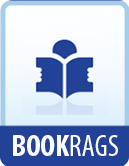First printed in the Morning Chronicle, July 13, 1820. The Burney family began to be famous with Dr. Charles Burney (1726-1814), the musician, the author of the History of Music, and the friend of Dr. Johnson and Sir Joshua Reynolds. Among his children were the Rev. Charles Burney (1757-1817), the classical scholar and owner of the Burney Library, now in the British Museum; Rear-Admiral James Burney (1750-1821), who sailed with Cook, wrote the Chronological History of the Discoveries in the South Sea or Pacific Ocean, and became a friend of Lamb; Frances Burney, afterwards Madame d’Arblay (1752-1840), the novelist, author of Evelina, Camilla and Cecilia; and Sarah Harriet Burney (1770?-1844), a daughter of Dr. Burney’s second wife, also a novelist, and the author, among other stories, of Geraldine Fauconberg. “Country Neighbours; or, The Secret,” the tale that inspired Lamb’s sonnet, formed Vols. II. and III. of Sarah Burney’s Tales of Fancy. Blanch is the heroine.
The good old man in Madame d’Arblay’s Camilla is Sir Hugh Tyrold, who adopted the heroine.
Page 91. To my Friend The Indicator.
Printed in The Indicator, September 27, 1820, signed ****, preceded by these words by Leigh Hunt, the editor:—
Every pleasure we could experience in a friend’s approbation, we have felt in receiving the following verses. They are from a writer, who of all other men, knows how to extricate a common thing from commonness, and to give it an underlook of pleasant consciousness and wisdom. ...The receipt of these verses has set us upon thinking of the good-natured countenance, which men of genius, in all ages, have for the most part shewn to contemporary writers.
* * * * *
Page 92. On seeing Mrs. K—— B——.
The late Mr. Dykes Campbell thought it very likely that these charming verses were Lamb’s. I think they may be, although it is odd that he should not have reprinted anything so pretty. Mr. Thomas Hutchinson’s belief that they are Lamb’s, added to that of their discoverer, leads me to include them confidently here. Here and there it seems impossible that the poem could come from any other hand: line 11 for example, and the idea in lines 13 to 16, and the statement in lines 27 and 28. None the less it must be borne in mind that one does but conjecture. The lines are in The Tickler Magazine for 1821.
* * * * *
Page 93. To Emma, Learning Latin, and Desponding.
First printed in Blackwood’s Magazine, June, 1829.
Mary Lamb had other pupils in her time, among them Miss Kelly, the actress, Mary Victoria Novello (afterwards Mrs. Cowden Clarke), and William Hazlitt, the essayist’s son. Emma was, of course, Emma Isola. Sara Coleridge’s translation of Martin Dobrizhoffer’s Historia de Abiponibus under the title Account of the Abipones was published in 1822, when she was only twenty.




